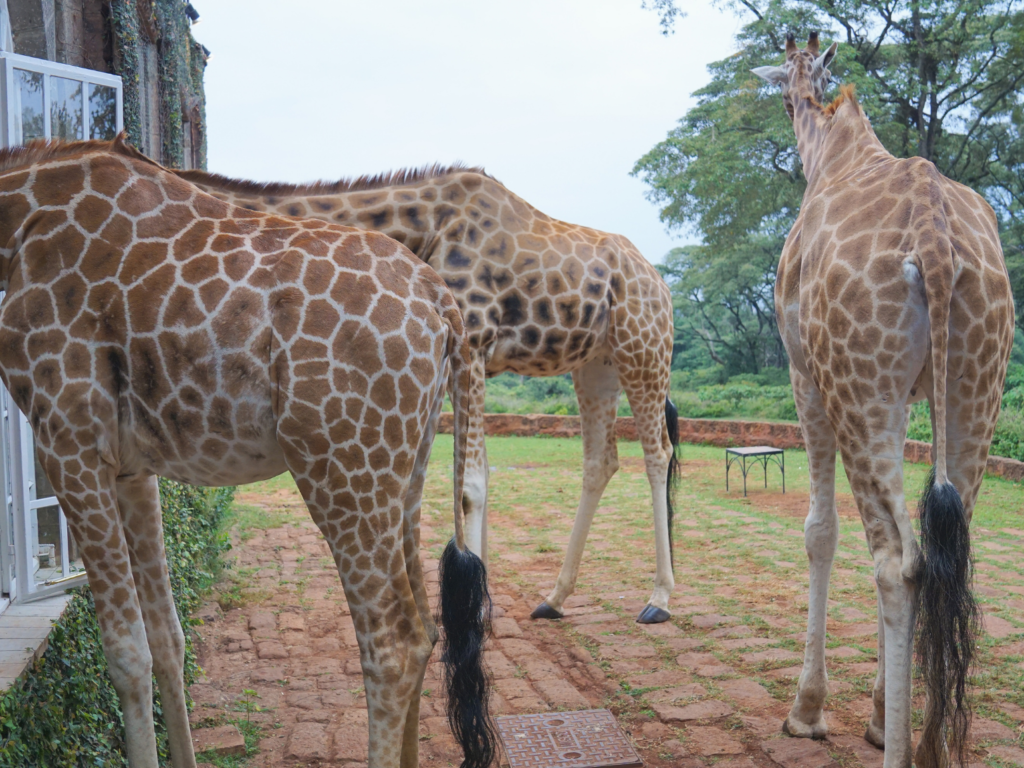I wanted to experience a stay at Giraffe Manor myself before building my own opinion of whether it should be considered an ethical wildlife encounter. For nearly my entire life, a stay at Giraffe Manor, outside of Nairobi, Kenya, was top on my bucket list. With just twelve rooms, it is nearly impossible to book a night at this iconic hotel. As Giraffe Manor’s popularity reached new heights alongside their social media-driven attention, I couldn’t help but worry the original preserve for giraffes was getting lost within the hashtags.
Usually, any time there is a mix of selfie craving tourists and wild animals, it becomes a remedy for wildlife exploitation! The whimsical setting of guests eating breakfast while giraffes stick their necks through windows for a snack seemed too good to be true. Of course, these are undeniably photogenic moments, but they raise a concern for the ethics of the entire practice. All too often, close encounters involve abusive training, restraint, and exploitation. Compared to other wildlife selfies, the posed moments at Giraffe Manor might seem equally unethical. Because of this speculation I wanted to provide a full breakdown of this experience and provide my honest review of whether Giraffe Manor is an ethical wildlife encounter.

Why is Giraffe Manor Considered an Ethical Wildlife Encounter
Unlike cruel and unethical wildlife encounters, Giraffe Manor exercises four key practices that ensure the animals are treated with respect and provided high-quality welfare!
Free Choice: The giraffes are never forced or restrained during guest encounters. In fact, the animals have complete autonomy over any of the interactions. Oftentimes the giraffes will choose to walk off into the forest once they have had enough. Some members of the giraffe herd chose to remain in the forest, opting out of interacting with guests.
Availability of Food: Even though guests feed giraffes dried pellets, most of their diet consists of fresh leaves growing within their home. Dried pellets from guests only make up a fraction of what the giraffes can choose to eat each day.
Large Natural Habitat: The Rothschild’s giraffes are contained within an expansive 150-acre forested habitat. Additionally, they are not locked into barns at night and instead can live a very natural outdoor lifestyle.
Conservation Focus: Even before becoming a hotel, Giraffe Manor has always been a preserve for breeding Rothschild’s giraffes. In fact, to help this endangered species, over 50 giraffes have been returned to the wild from Giraffe Manor over the years.



Giraffe Manor: A True Ethical Wildlife Encounter
I am thrilled to say that I have experienced Giraffe Manor firsthand. I am even more thrilled to give it a stamp of approval as an ethical wildlife encounter! Providing the giraffes an expansive natural habitat, plenty of food to eat, freedom to spend their days as they want, and the priority of supporting conservation – are all facets of ethical wildlife travels. I am hopeful this surreal sanctuary for endangered giraffes and guests alike will continue to create positive impacts for Kenya’s wildlife.
Additional Resources for Ethical Wildlife Travels:
- Giraffe Manor: Ethical Wildlife Encounter or Not?
- Wildlife Selfies – What’s the Harm in a Picture?
- 3 Tip Checklist for Animal Friendly Travel












